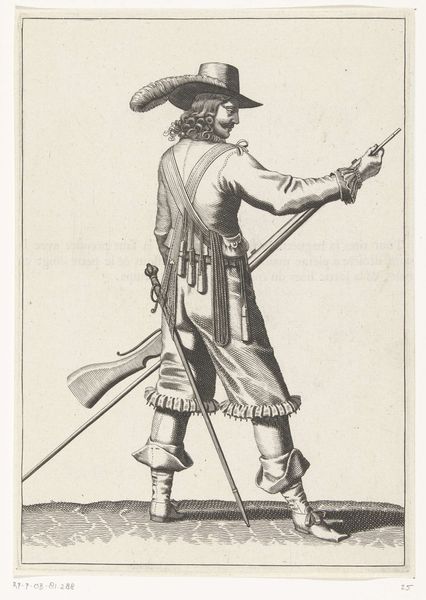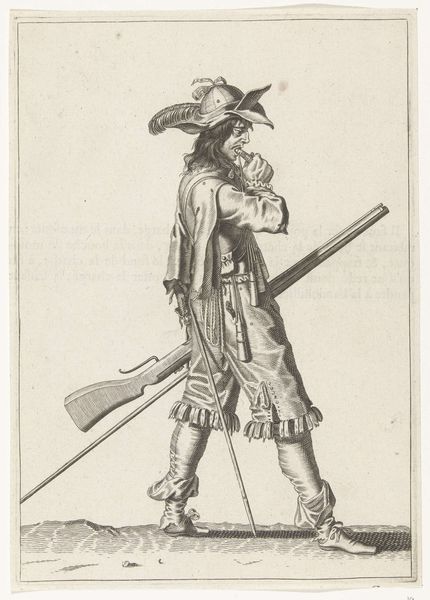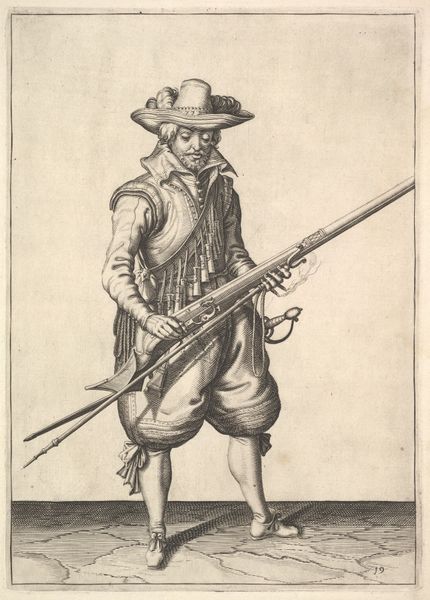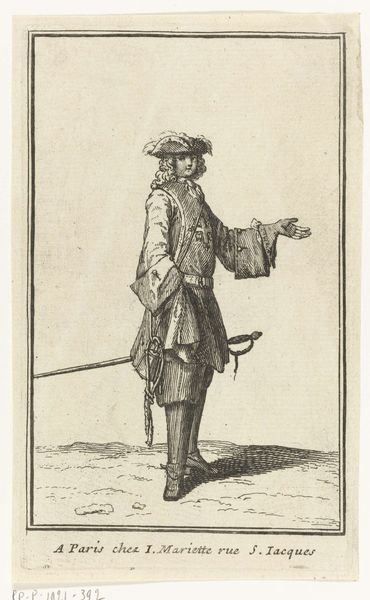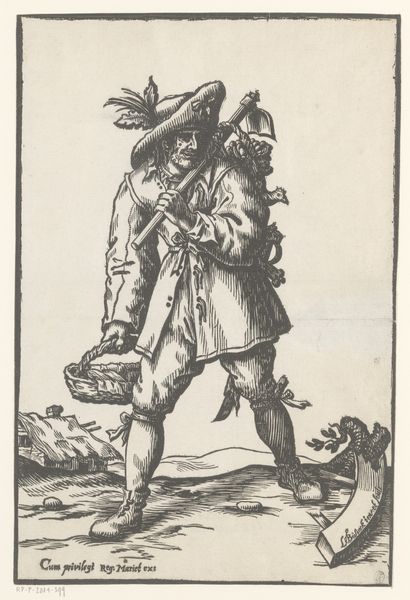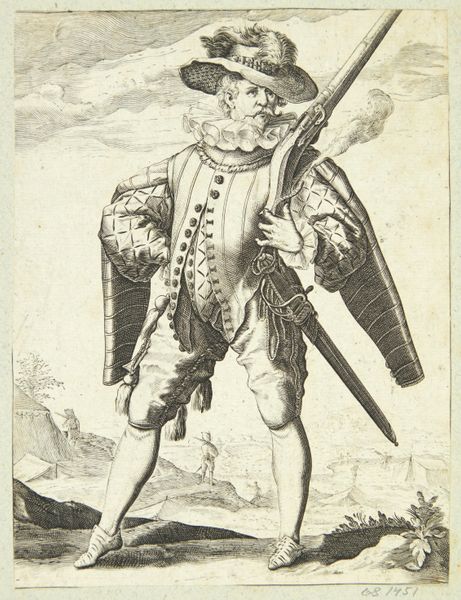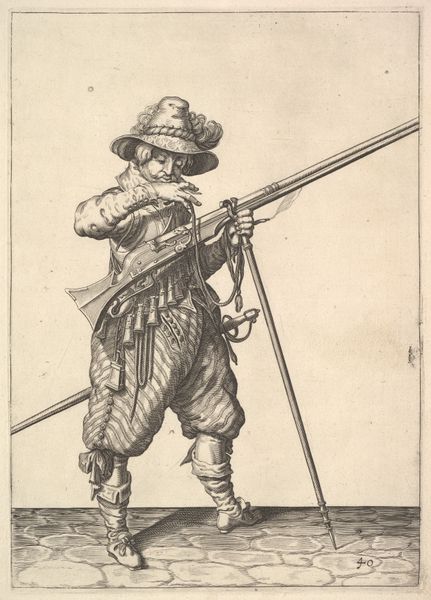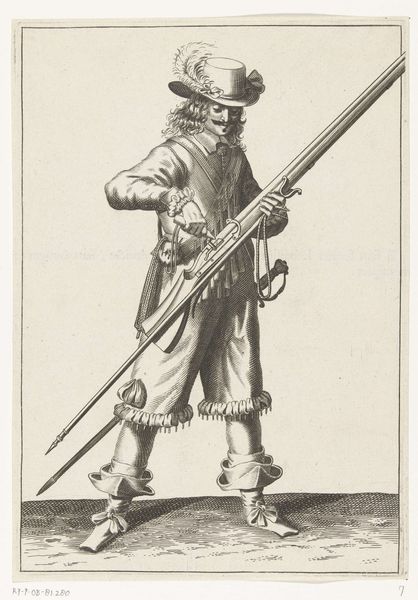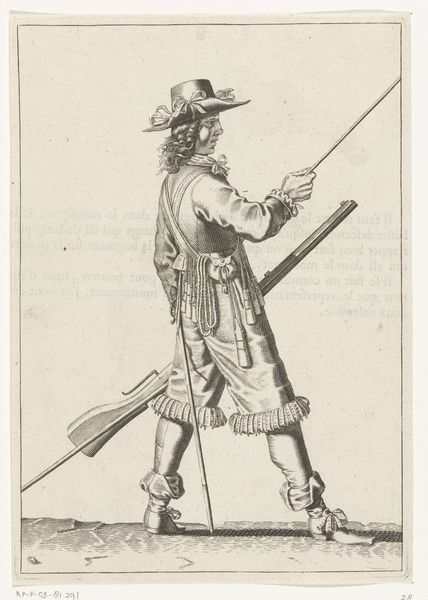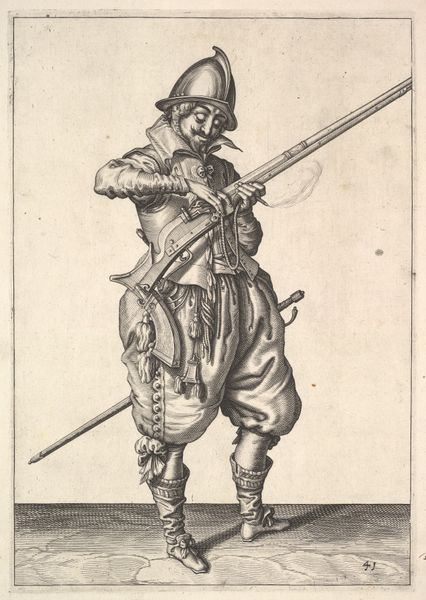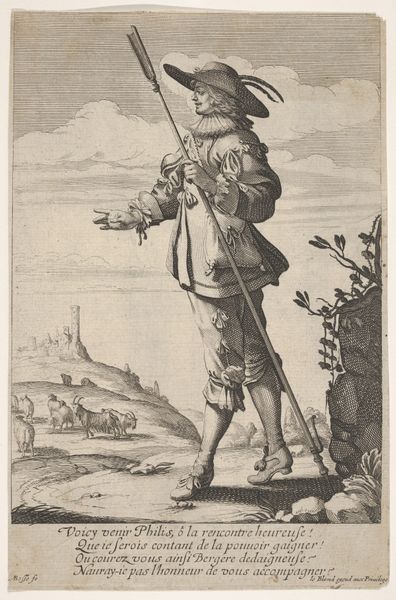
A soldier pulling out the ramrod from its holder, from the Musketeers series, plate 25, in Wapenhandelinghe van Roers Musquetten Ende Spiessen (The Exercise of Arms) 1575 - 1629
0:00
0:00
drawing, print, engraving
#
portrait
#
drawing
#
baroque
# print
#
figuration
#
soldier
#
history-painting
#
engraving
#
arm
Dimensions: plate: 10 1/2 x 7 9/16 in. (26.7 x 19.2 cm) sheet: 13 7/8 x 10 1/2 in. (35.2 x 26.6 cm)
Copyright: Public Domain
Editor: This is plate 25 from Jacques de Gheyn II's "The Exercise of Arms," dating sometime between 1575 and 1629. It’s an engraving of a soldier pulling out his ramrod. It has this very orderly, almost diagrammatic feel to it. What can you tell me about its purpose, and what do you see in this piece? Curator: Well, beyond its technical precision, which speaks to the evolving role of military manuals, consider this image within the context of the Eighty Years’ War. Gheyn's work emerged during a period of intense social and political upheaval. These weren't just illustrations, but subtle tools for solidifying identity through military exercise. The act of depicting the exercise of arms normalizes the act of soldiering, yes? Editor: I hadn’t thought of it like that. I guess I was stuck on seeing it as purely informational. So, by depicting this, the artist might be subtly valorizing military service? Curator: Exactly. And how might that impact public sentiment during a prolonged war? Think about the audience, too. These images were consumed within a society wrestling with questions of autonomy, governance, and faith. Where does propaganda start and instruction begin? Editor: It’s interesting to consider how images like this play a role in shaping those kinds of values. Curator: Indeed. Even the specific pose, the way the soldier holds himself, it reinforces societal expectations around duty and honor. It subtly advocates for participation in these conflicts. Editor: So looking closely, even at something seemingly straightforward, reveals so much about the climate of the time. Curator: Precisely. And asking these questions allows us to analyze not only the aesthetic qualities of art but also the social, political, and historical contexts in which it exists.
Comments
No comments
Be the first to comment and join the conversation on the ultimate creative platform.
